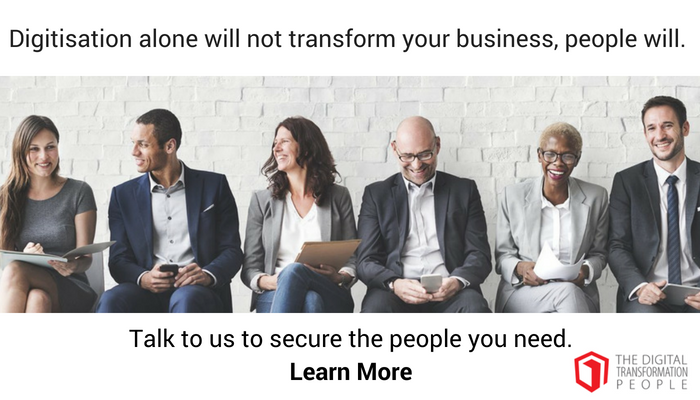In thinking about the multiple job changes I’ve had over the last 25+ years of my bizarre but seemingly congruent career in HR, looking through my current employee experience design lens – I can honestly say that one of the most often overlooked and most psychologically important areas is that dead zone between receiving a new offer of employment and starting at a new job.
When I lived back in America – the length of time between getting a new offer, resigning from my current job and starting the new job was often no more than two to three weeks. Barely enough time to pack up your desk and say your goodbyes before having to think about what’s coming next.
Looking back on it – this was sort of a blessing, though there was a certain level of stress at clearly disappointing my current boss and frankly having no idea what my new boss was really going to be like on Day 1.
I struggled through it, knowing I’d be showing up to the new role and be thrust likely into a 2-3 day new hire orientation – where all would be explained, and there would be plenty of time to fill out paperwork, listen to various senior leaders march in and out of the extended meeting room – espousing what a wonderful choice we’d all just made, how we’ll enjoy the new company’s culture, and it’s many gifts of training, benefits, employee activities and support we’d likely receive until we got our feet under us.
Of course that all ended at about Day 5, when the fun & games were over – and it was time to show them why they hired us in the first place. There was a sort of honeymoon on performance measurement for about another 3 months of the job – but it waned quickly as my hyper-awareness, continual meeting of new people and a mountain of work started to pile up in my proverbial ‘inbox.’
Truth be told – it was sink or swim time – and there was really no safety net underneath me to break my fall, were I to fall on my face at any stage in my integration into this new environment. Such was my life on Wall Street, and with some of the larger consultancies I worked with in the first half of my career in NYC.
Fast forward to my time working in Britain – and the rules were very different indeed. I had to get used to a three month ‘Gardening Leave’ which I often ended up working through, likely with a week of unused holiday being tacked on at the end to allow me to breath before diving straight into another hyper-growth technology chaos party – and now working with much smaller companies – most of which were (or still acted like) start-ups – and there was absolutely ZERO build up, ZERO safety netting, and nothing like the extensive new hire orientation sessions I had become used to in the USA.
Reflecting on this incredibly stressful ‘no man’s land’ of the in-betweens – I realise now what a massive missed opportunity it was, as well as what a powerful risk it was for my new employer NOT to reach out to me, welcome me early on, provide me with insight into my new employer and how I could have easily be dissuaded from continuing on my path to another company and another job, were I so inclined to stay put.
I was walking into a great unknown of unknowns and all I could hold onto was that I was at least employed, and had negotiated a decent salary with the hope of wondrous fortunes in the distant future (if I survived the first 30 days, that is).
I then spent some time working with Kantar (the market research arm of WPP), and spent quite a bit of time wrestling with our Hyderabad, India office – supporting the wonderful Reka Narendra (our enlightened HR Director for that off-shored technology team there).
Her worries stemmed from not being able to fill mission critical technology and customer service roles fast enough to keep up with our demands as a global IT shared service. The issue was simply that Hyderabad had become home to many illustrious global technology brands such as Facebook, Google, Microsoft, Wipro, Tata and a host of others.
The competition for amazing talent was shocking – and the primary issue was that job candidates were going through our recruitment process, receiving offers almost on the spot – and then shopping those offers out to other companies to see if they could negotiate a more lucrative pay package.
Our job fill rate was 30% – POST OFFER! We were losing newly offered candidates faster than we could keep them in the running. I thought this must just be an anomaly associated with a crazy talent market as seen in places like India, China, Southeast Asia – and we’d just have to put up with the risk and figure out how to seem more attractive as a destination vs. a negotiating point.
Then it started to happen again in my next role with a UK headquartered tech company – where candidates were happily parading their new offers of employment to other hungry recruiters who would then work at lightening speed to get 3 more interviews for that freshly offered candidate.
And guess what? The problem is only going to get worse – in first world markets where the seeming insanity of this sort of activity wouldn’t be dreamed of, for fear of burning bridges with well-know global brands. As a newly offered candidate – you used to be thrilled you received an offer – and would disavow your prior association proudly in deference to your new found friends and shiny new badge of honour.
In these crazy days of the Digital Age – where skills aren’t yet being taught in universities for technologies that are literally coming into reality before our eyes – talent has become a critical commodity to be handled with great care, as mission critical and a measurably urgent business requirement to ensure forward momentum and competitive edge.
So – why aren’t we solving for capturing the hearts and minds of our newly recruited and offered stars, to ensure they are anchored psychologically into their new community, their new digs, their new manager and teammates – as well as their new purpose and mission?
Research shows us that what hooks and anchors human beings when it comes to upheaval and change at such a personal level are the following key motivators…

Taking these slightly out of order – in deference to the administrative flow that we’re often required to undertake to successfully (and legally) on-board employees, it’s critical that we meet new hires in the middle – where your organisation’s requirements intersect with that treasured new hire’s intrinsic motivations, all the while communicated through our actions, digital platforms and user-experience design that sense of fairness, freedom, individuality & personalisation, positive emotion and significance – while welcoming them into their new club.
It’s critical to show progress in what may seem a never-ending stream of paperwork, signatures, sign-offs and mindless reading. We need to make it fun through gamifying the process, as well as illustrating the meaning and purpose behind our process.
One of the first companies ever to get this right – and to set the bar for the rest of the corporate world – was Cisco Systems. As Cisco was growing at insane rates, primarily through acquisition of other network providers, equipment manufacturers, specialty service companies – at a pace that was dizzying as in looking up the list of acquisitions – I counted 24 web pages alone dating back to 1994 (140 companies in 20 years).
Their on-boarding process was superior – as every new hire who showed up Day 1 would be personally welcomed by their new manager, shown to their new desk – whereupon they would see their new collared golf shirt, laptop, all the kit you could need in your career – and importantly your new Cisco desktop phone with the new hire’s name streaming across the top LED display.
You had arrived! And you were almost overwhelmed by the sense that you belonged in what felt like a very real way – which communicated that Cisco cared about your success, wanted you to be there, and that you were special to them. I remember reading multiple articles on the excellence in on-boarding execution that Cisco represented – and being jealous I couldn’t reproduce those same results.
But in the last 2-3 years – there has been an explosion of cloud-based, digital tooling that is seemingly flooding the HR tech arena – centred on solving for on-boarding challenges experienced by the HR practitioner as well as the new starter.
I have participated in several demos of systems such as Cognology (one of my personal favs) or any of the following ten tools captured by Capterra or just go to GetApp to look up the HR technology category – sub-category ‘Onboarding’ and you have a slew of these amazing tools at your finger tips.
Many of the HRIS tools today offer special on-boarding capability – which is configurable to your current processes – incorporate e-signature for all forms and legal requirements, and offer document management and storage linked directly to the core HR system.
But what you really want to ensure you do is NOT simply to rely entirely on technology – but rather ensure there are friendly human voices, faces and connections that are built and maintained during that crucial period just after an offer of employment is signed – and well before your new hire walks through the door on Day 1.
In addition to required paperwork and legal documents – as well as benefits decisions to be made – make sure that your new hire knows her team, her new manager, where she’s meant to show up Day 1, provide some high-level company material to familiarise her with the vision, mission, purpose and special meaning that her new company proudly touts. Reinforce in her mind that her decision is the right one to make – and get her excited about Day 1, vs. leaving her in the dark about what comes next.
Some start-up companies often invite new hires out to company events, intimate dinners, or along to meet team members over a casual lunch. You need to think about the on-boarding process as a psychological life-cycle of powerful change and life transforming activity for the new hire.
Changing jobs may be one of the most important decisions your new hire has made in the last several years – so treat it as a powerful event that needs special handling. Do it well – and your offer to hire metrics improve dramatically. Your early stage productivity metrics and well-being engagement scores will also improve.
Then of course there is your NPS scores (which Glassdoor happily tracks online for you – for EVERYONE to see!). Speak to your newest hires and take them through a listening workshop – asking them how they felt about receiving their job offer, and what happened to them from that point until Day 1.
I suspect you’ll be rather shocked to hear that they felt slightly less than overwhelmed by the whole adventure – and find lots of impactful improvements you can make that will set both of you up for success.
If you would like a fresh perspective on how to create magical on-boarding ‘moments that matter’, then please reach out to myself or my colleagues – and we’d be more than happy to help you improve this important journey to maximise positive psychological connection, pumped up new hires ready to deliver results Day 1 and a reinvigorated business that thrives on that shared excitement.
Article by channel:
Everything you need to know about Digital Transformation
The best articles, news and events direct to your inbox
Read more articles tagged: Featured, Future of Work, HR, Talent









